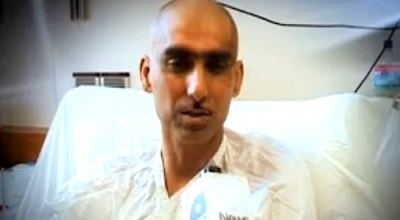Micro-chipping Athletes Health Monitoring
Micro-chipping Athletes Health Monitoring: Imagine a world. Where a coach knows an athlete is getting tired and at risk of injury before the athlete even feels it. Imagine a medical team getting a warning about a potential heart issue the moment it starts. This is not a scene from a science fiction movie. This is the reality taking shape in sports today, thanks to progress in micro-chipping athletes health monitoring technology.
These are not the chips you put in a pet. They are advanced, tiny sensors that collect a constant stream of information from an athlete’s body. This new approach to micro-chipping athletes health monitoring provides a window into the human body like never before.
The main goal is to keep players safer and help them perform at their best. This article will walk you through how this technology functions, its significant advantages, and the serious conversations we need to have about its use.
What is Micro-chipping for Athletes and How Does It Function?
When we talk about micro-chipping athletes health monitoring, we refer to the use of very small, electronic devices placed on or in an athlete’s body. Most often, these are wearable sensors embedded in patches, clothing, or even smart tape. The core idea is to gather biological information in real-time. Giving a live look at the body’s condition during training and competition.
The system works in a connected way. The tiny chip, which is often smaller than a postage stamp, has several parts. It contains sensors that track things like heart rate, body temperature, muscle activity, and hydration levels.
A small battery powers it, and a wireless transmitter sends the information it collects. This data travels instantly to a computer or tablet on the sidelines. There, software analyzes the numbers and presents them in a simple way for coaches and doctors to understand. This process of micro-chipping athletes health monitoring methods gives a full picture of physical strain.
- The sensors detect changes in the body’s signals.
- The transmitter sends this data without any wires.
- The software turns complex data into clear charts and alerts.
This technology represents a major step beyond older fitness trackers. It does not just count steps; it looks at the body’s direct responses to extreme physical effort. The development of micro-chipping athletes health monitoring focuses on creating a complete health picture for each player.
The Direct Benefits of Monitoring Athletes with Microchips
Why are sports teams so interested in this technology? The advantages are powerful and directly impact player safety and career length. The most important benefit of micro-chipping athletes health monitoring is the prevention of serious injuries.
By watching for small changes in an athlete’s data. The system can signal when a player is overworked. A sudden shift in muscle strain or impact force can suggest a higher chance for a muscle tear or joint injury, allowing for early rest or treatment.
Another critical area is watching for heart and brain health. In sports with high contact, like football or soccer, the micro-chipping athletes health monitoring systems can measure the force of hits to the head. This helps medical staff spot possible concussions right away. They can also track heart rhythm during intense activity. Identifying rare conditions that might only appear under extreme stress. This proactive monitoring saves lives.
These systems also help in planning better training routines. Instead of guessing if an athlete is recovered. Coaches can use hard data from the micro-chipping athletes health monitoring to make personal plans. They can see who needs a lighter day and who is ready for a harder workout. This makes training more efficient, improves overall team performance. Helps each athlete reach their personal best without pushing their body too far.
Important Concerns and Ethical Questions
With such powerful technology come big questions about its proper use. The main worry about micro-chipping athletes health monitoring is privacy. Where does the information go? Who can see it? An athlete’s body data is very personal.
There must be strong rules to stop this information from being used in wrong ways. Like by insurance companies or in contract talks without the player’s clear permission.
There is also a question of pressure. Could an athlete feel forced to play through pain because their data looks “good”? Or might a team decide not to pick a player based on historical health data from their micro-chipping athletes health monitoring records? This could create a new kind of discrimination in sports. The human element of how a player “feels” must still be valued over what the numbers on a screen say.
The conversation about actually putting chips inside the body. Known as implantable devices, is even more complex. While not common, the possibility raises further issues about bodily freedom and long-term health effects.
Creating clear ethical guidelines and laws is a necessary step for the future of micro-chipping athletes health. Athletes, doctors, and league officials must work together to build trust and ensure this tool is used for protection, not control.
Current Uses in Professional Sports Today
You might be surprised to learn how many professional leagues are already using forms of this technology. In soccer, many top clubs across Europe use GPS vests and smart patches that are a type of micro chipping athletes health monitoring.
They track player speed, distance run, and heart rate to manage fatigue during the long season. This helps coaches decide who to play in the next big game, reducing burnout and injuries.
The National Football League (NFL) in the United States has also started testing similar systems. They have placed sensors in player shoulder pads to measure head impacts and the forces their bodies experience.
The data from this micro-chipping athletes health research is helping the league understand how to make the game safer, leading to better helmet designs and rule changes to protect players.
Even Olympic teams use these tools. Swimmers, runners, and cyclists wear small sensors during training to study their form and efficiency. The goal is to find tiny improvements that can lead to winning a medal.
This practical use of micro chipping athletes health monitoring shows it is a valuable tool for gaining a competitive edge. While also focusing on the athlete’s long-term health and well-being.
The Future Direction of Athlete Health Technology
What comes next for this fast-moving field? The future of micro chipping athletes health monitoring points toward even smaller, more powerful, and more integrated systems. We will likely see sensors that are built directly into the fabric of jerseys or shorts. Making them feel invisible to the athlete. Battery life will improve, allowing for constant monitoring without needing a recharge.
The next big leap will be in data analysis. Future software for micro-chipping athletes will use artificial intelligence to not just report data. But to predict health events. It could tell a trainer, “There is an 85% chance this player will strain his hamstring in the next 20 minutes if he continues at this intensity.” This shift from reporting to predicting could change how sports are played, making them much safer.
We may also see a move toward more internal sensors for specific medical purposes. Like monitoring bone healing after a break. The conversation around ethics will grow as the technology does. The continued development of micro-chipping health monitoring promises a future where sports careers are longer, and the terrible stories of sudden cardiac arrest or severe brain injuries in athletes become much less common.
Frequently Asked Questions
1. Are the microchips placed inside the athlete’s body?
Most current systems are not implanted. They are typically wearable devices like skin patches, smart tape, or chips sewn into clothing. The term “micro-chipping” refers to the tiny size of the sensor technology, not necessarily that it is under the skin.
2. Can this technology completely prevent sports injuries?
No, it cannot prevent all injuries. Its power lies in significantly reducing the risk. By providing early warnings for fatigue, dehydration, or muscle strain, micro-chipping athletes health monitoring allows for early action, which can stop many common sports injuries from happening.
3. Do the athletes have a choice in using this technology?
This varies by league and team. In many professional settings, it is part of the team’s standard equipment. However, there is a growing push for athlete consent and clear agreements on how their personal health data from micro-chipping athletes health monitoring systems is stored and used.
4. How accurate is the data from these microchips?
The technology is highly accurate and is getting better all the time. The sensors are designed and tested to provide medical-grade information. That doctors and trainers can rely on to make important decisions about an athlete’s health and safety.
5. Could this technology be used for amateur or youth sports?
As the cost goes down, it is very likely. The safety benefits of micro-chipping athletes health monitoring could be great for young athletes. Helping to prevent overuse injuries that can end promising careers before they even start. However, cost and managing the data for large groups are current challenges.
Conclusion
The arrival of micro-chipping athletes health monitoring systems is a defining moment for the world of sports. It offers a powerful new way to understand the athlete’s body, promising a future with fewer injuries, longer careers, and better performance. The core of this technology is a positive one: protecting the people we admire for their physical gifts.
However, this new tool must be handled with care. The path forward requires a strong focus on athlete privacy, informed consent, and ethical guidelines. The data should be a tool for empowerment, not for pressure.
By balancing the amazing benefits of micro-chipping athletes health monitoring with a thoughtful approach to its challenges, we can guide sports into a safer and healthier new era for everyone who plays and loves the game.






